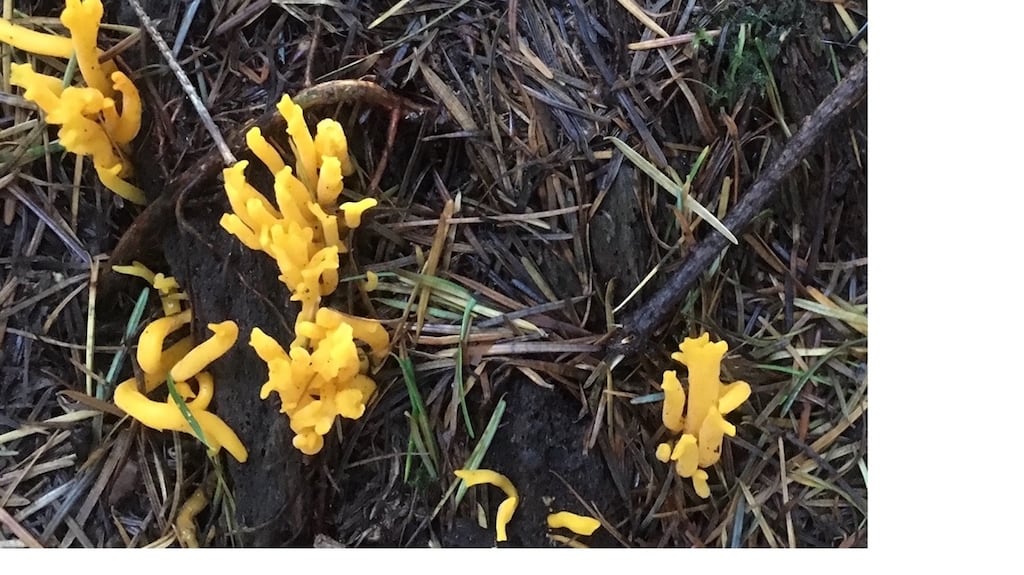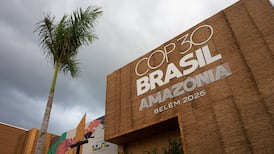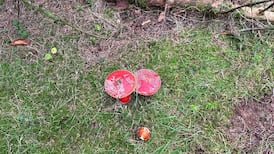My son and I came across what I imagine is a fungal growth in Barnaslingan Wood. What is it and is it safe to touch?
Jaime McKeown, Shankill, Co Dublin
It's a fungus, one of the Clavarioid species, probably Clavulinopsis fusiformis, which is found from September to December. Some of the species are rather rare. It is safe to touch.
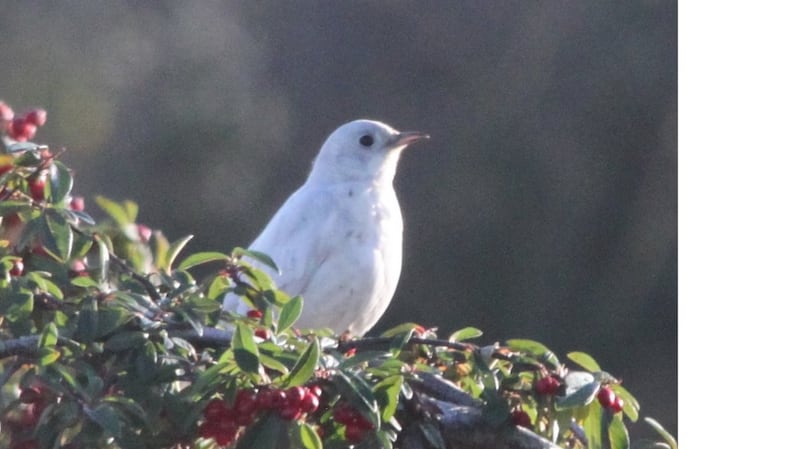
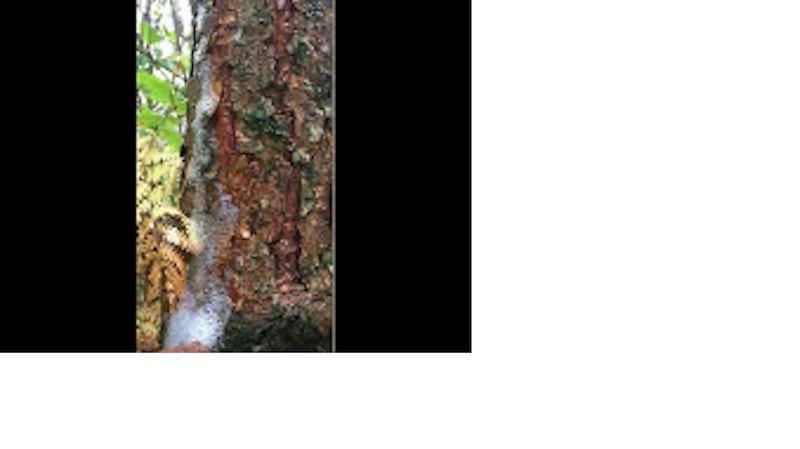
I photographed this bird recently feeding on cotoneaster berries. Is it an albino blackbird?

Mary Brodigan, Killineer, Co Louth
If the blackbird has pink eyes it’s albino, but if it has normal-coloured eyes then it’s leucistic. Leucism is a genetic mutation that prevents melanin from being deposited normally on feathers but it is present in other parts of the body. Albinism is a genetic mutation that prevents the production of melanin in the body.
This is a video of one of our Scots pines, which I saw blowing bubbles in mid-October. The bubbles started about 6ft from the ground and continued to the bottom of the tree. A few weeks later I saw two different Scots pines in the same area (near the Coomhola river) blowing bubbles about 40cms above the ground. On both occasions there had been recent heavy rain.

Geraldine Wales, Bantry, Co Cork
There are two possible explanations given by arborists online: heavy rain gets into a wound in the bark of the tree and interacts with the sap, forming a soapy liquid that is then expelled under pressure; or, it’s a case of foamy canker, where bacteria enter through a damaged area of the bark and interact with the wood and sap to produce a foam after heavy rain.
Ethna Viney welcomes observations and photographs at Thallabawn, Louisburgh, Co Mayo, F28 F978, or by email at viney@anu.ie. Include a postal address.
